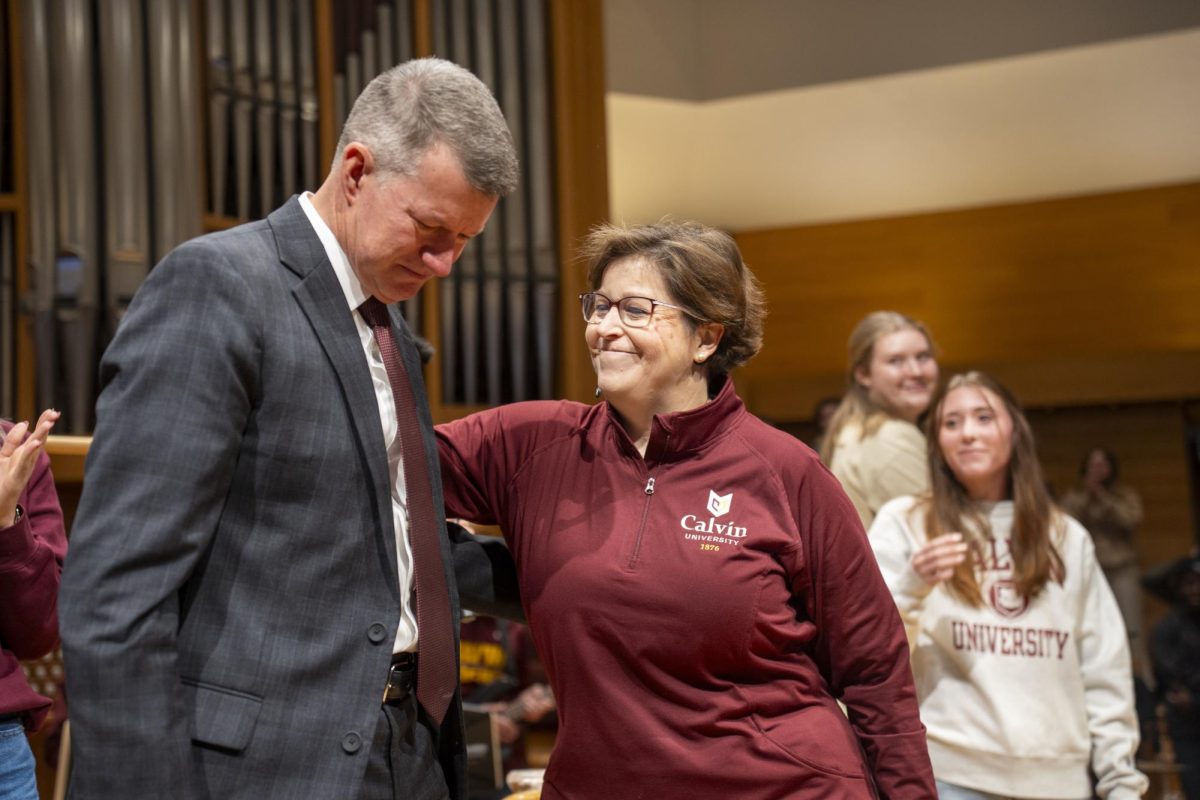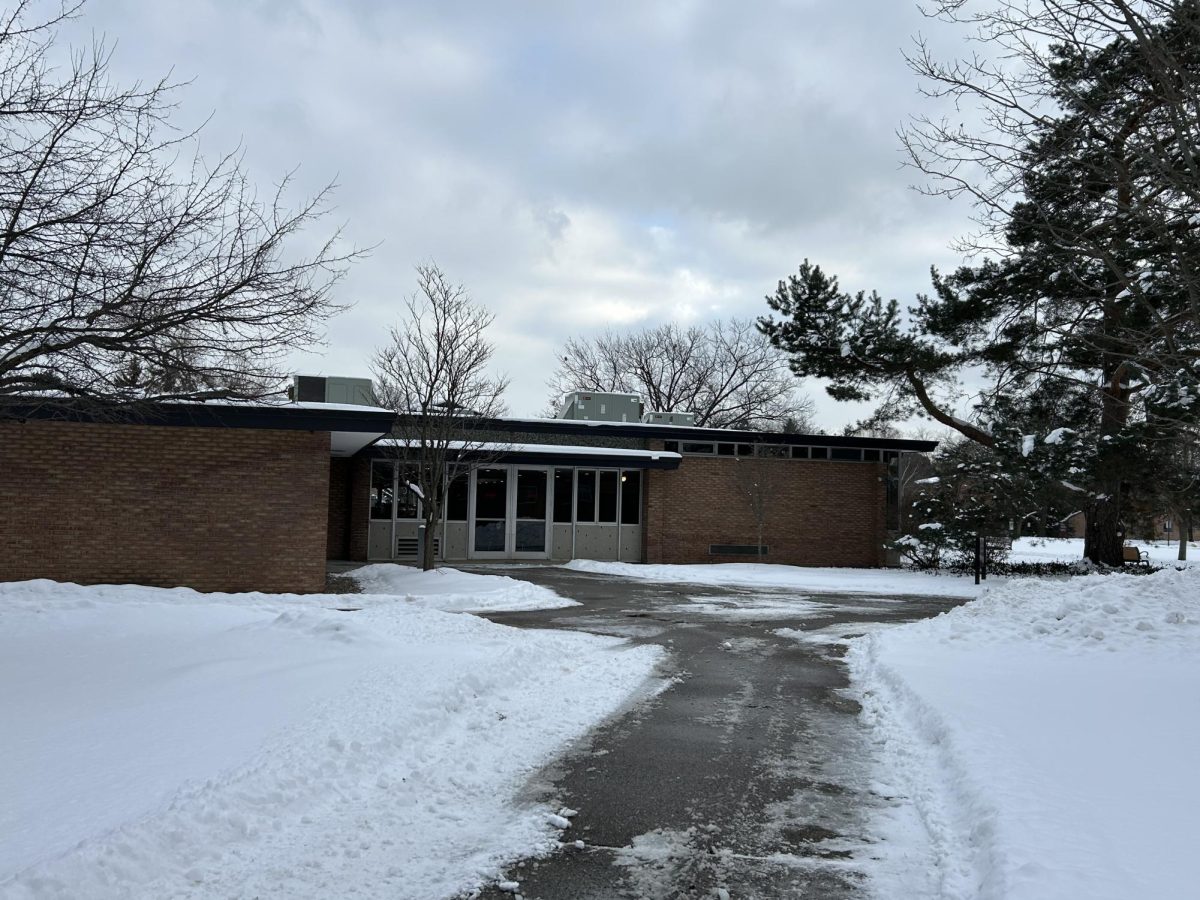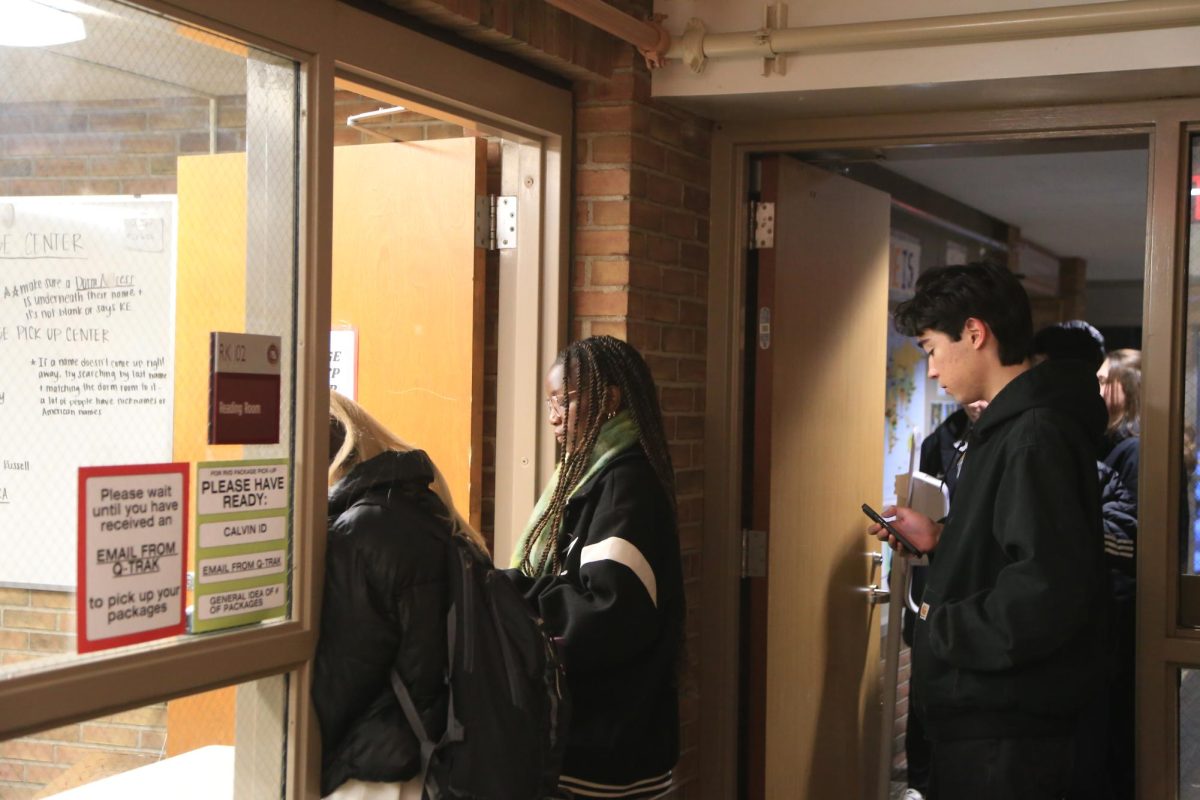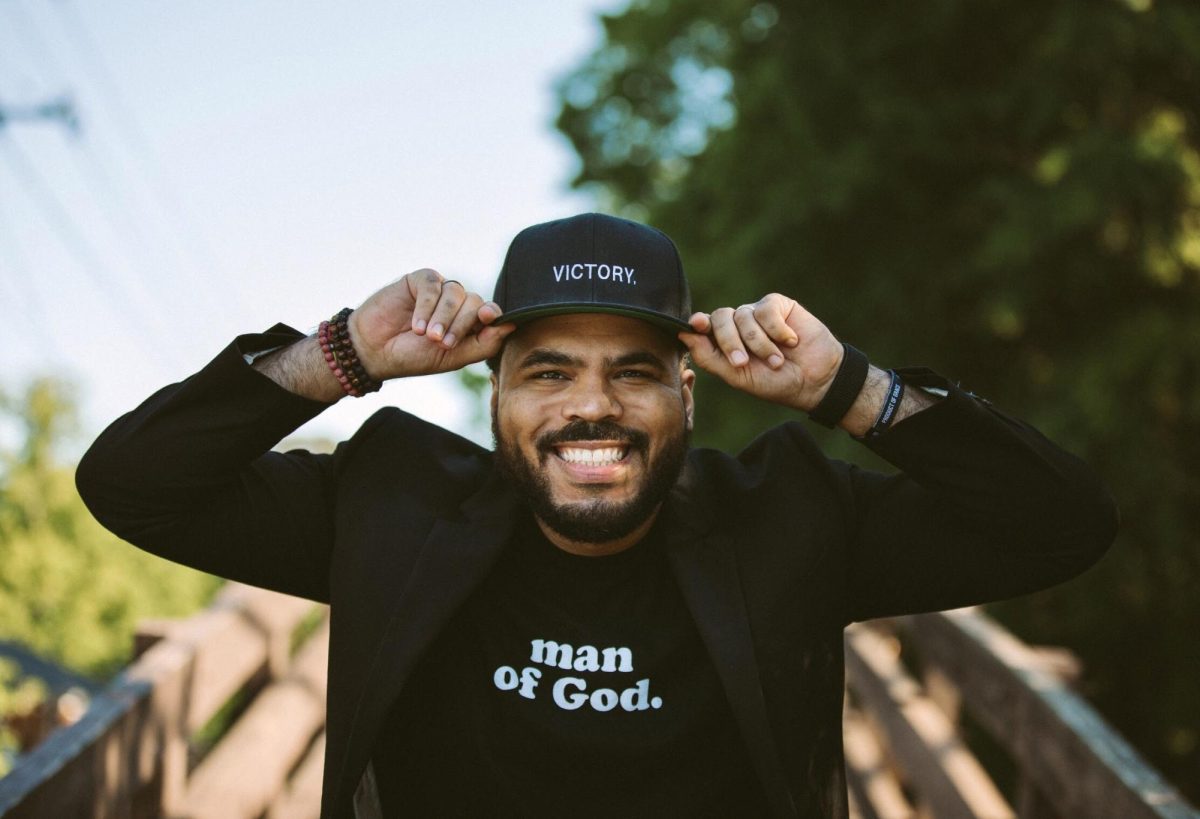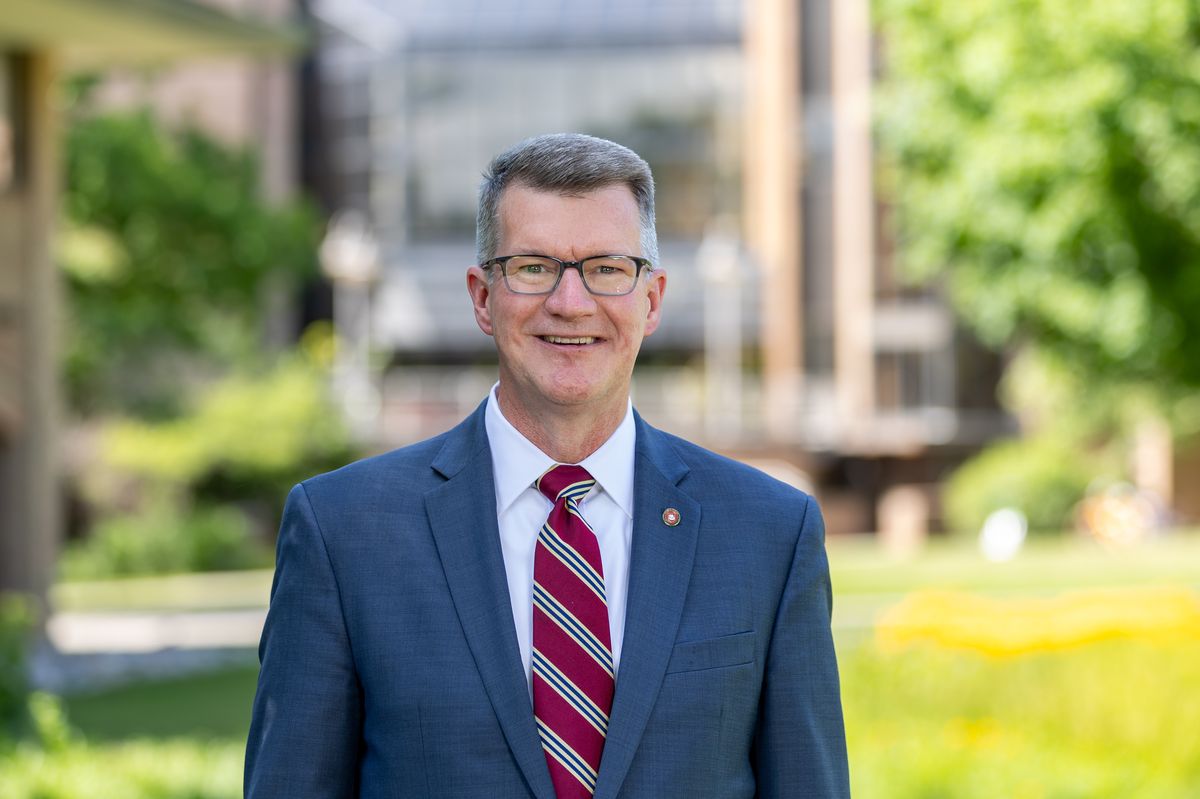When Chap Clark stepped on stage in front of a packed auditorium Wednesday, most were thinking only of the final speech of the 2013 January Series.
Students rushed from their morning interim classes. Senior citizens had camped out since the doors had opened. High school counselors trekked from hours away. Youth group leaders and pastors flocked to hear what Clark had to say.
But little did they know, Clark had spent the majority of his morning sharing his passion for his topic — and his time in Grand Rapids was nowhere near finished.

I woke up around 7:30 a.m. — thankful I had an afternoon Interim class and normally got to sleep in — and started my drive to the DeVos Communications Center. I was shadowing January Series speaker Chap Clark for the day, and it was my job to find out what went on behind the scenes of the January Series.
“You must be Ryan,” said CJ Clarke, an assistant with the show, beaming with an energetic smile. I certainly was not that energetic at 8 a.m. but I returned the firm handshake. “This is Chap Clark,” she continued, turning to her right.I knew the speeches started at 12:30 p.m., so I was a little surprised to be called in to start shadowing at 8:15 a.m. I got to the basement where Clark was going to film “Inner Compass,” a Calvin-based interview television show that broadcasts on PBS.
First, a little background on the January Series. A finely-tuned production, the January Series entered its 26th year headlining speakers like Cokie Roberts and Rebecca Skloot. The speeches are broadcast in remote locations across the United States, Canada and even in Lithuania. And if you thought the January Series was polished on stage, it’s just as polished behind the curtain.
 “So you’re my shadow today?” asked the January Series speaker. “That’s kind of creepy,” he quipped. Not the best start, but hey, I had all day to work on that.
“So you’re my shadow today?” asked the January Series speaker. “That’s kind of creepy,” he quipped. Not the best start, but hey, I had all day to work on that.
Before I could come up with a witty response, Shirley Hoogstra, vice president of student life and host of the show, entered the studio and introduced herself.
The tech crew began putting microphones on Hoogstra and Clark as the two made small talk. Clark is from just outside Seattle and, after flying in the day before, was still on west coast time. He had woken up at 4 a.m. Seattle time, but you never would have known with his energy and alert conversation.
As an assistant rolled a lint remover over Hoogstra’s jacket, I was ushered across the hall to the control room, where producers and staff watched the show on a wall of monitors, controls and headsets. A few minutes later, an interim class focused on the January Series walked in.
As 9 a.m. hit, the cameras started rolling. Hoogstra read the introduction off a prompter: “My guest today is Chap Clark, professor of youth, family and culture at Fuller Theological Seminary and author of Hurt 2.0: Inside the World of Today’s Teenagers. Welcome, Chap.”

She paused. “That was a little mumbly — not crisp,” she said, getting ready to start over.
“I guess we’re editing that out,” smiled Clark.
The class across the hall chuckled as the show got back on track and two carried on a spirited discussion.
Before I knew it, the 25 minutes of the show had ended and Hoogstra started reading the closing remarks off the prompter. While the producers debated over whether Hoogstra may have looked off camera during the last seconds of the outro, I walked back across the hall to the studio.
But the “Inner Compass” staff had already gotten Clark’s microphone off and were bringing him out the door and up the stairs. Without saying goodbye to Hoogstra, the producers or anyone in the class, I quickly followed.
“I hate the 25-minute thing,” said Clark as he climbed. “I want to talk about this and this and this…”
When we arrived upstairs, the January Series Interim class had somehow beaten us to the classroom. They began a question and answer session based on his television interview just a few minutes before.
 The students quickly began pushing back on his ideas of their generation being the most stressed, hurt and abandoned in history. So Clark began explaining how he frames the information differently for different audiences.
The students quickly began pushing back on his ideas of their generation being the most stressed, hurt and abandoned in history. So Clark began explaining how he frames the information differently for different audiences.
It was fascinating to watch the conversation taking place, as the Calvin students — who seemed to be competent, well-adjusted and successful — struggled to reconcile the message of a speaker whose research showed that most of them had not yet begun step out of the agenda of their parents.
After about a half hour of discussion, Kristi Potter, the director of the January Series stepped into the room. Clark wrapped up the last question and left with Potter. I quickly packed up my notepad and followed.
“How can anybody live here?” barked Clark, stepping outside into the 9-degree Michigan winter with snow swirling in the sky. Potter laughed.
The three of us walked back to the Prince Conference Center for Clark to grab his laptop.

After Clark stopped by his room, Potter pulled her car around and we left for the Covenant Fine Arts Center (CFAC). After two hours of interviews, we were finally ready to hit the stage — for a sound check.
We walked on stage through a dark hallway in the back.
“How long is my speech supposed to be?” asked Clark.
“About 45 minutes,” replied Potter.
Clark was surprised and said he’d have to delete a few slides of his PowerPoint presentation.
“And what’s the audience going to be like?” he asked.
Potter listed off the groups she expected: Calvin students, young adult group leaders, youth pastors, senior citizens…
“So a diverse group,” he laughed. I don’t think the list of people gave him any helpful insights into his audience.
He opened up his laptop on the podium as the tech crew put on his wireless microphone.
“Sometimes I get a little animated, just letting you know,” he warned the sound tech.
So after deleting a few slides and making sure his calendar app wasn’t going to interrupt the PowerPoint on his laptop, we were off to our next stop.
We left the CFAC and trudged through the snow to the commons annex. Clark still wasn’t used to the weather, and made another joke about how cold it was.
We headed upstairs to the alumni boardroom, where Clark was scheduled to meet with some high school guidance counselors. The snow had delayed most of them and Potter, Clark and I were the only ones there at 10:57 a.m.
I peeked inside the boardroom and saw an elegant lunch prepared for Clark and the counselors. The rest of the counselors showed up and we all sat down at the tables.
The group of counselors hit it off with Clark, as Clark explained that society blames kids for what they are instead of the societal systems for what they’ve created.
After about 20 minutes of conversation, Potter walked into the room carrying a maroon and gold scarf from the campus store. Clark laughed, obviously surprised by the gift, but excited that he would be warm during his walk back to the auditorium.
Potter then said that it was time to go back to the Prince Conference Center so Clark could rest for a few minutes before heading backstage, but Clark declined and asked to stay with the counselors.
Potter seemed torn between forcing her speaker to rest and letting him mingle with the counselors, but she gave in and let him stay another full half hour.
I was amazed by the energy Clark sustained throughout the day. From getting up at 4 a.m. Seattle time to talking almost nonstop about the issue while running from building to building all day — I was exhausted and I hadn’t even done anything.
Clark continued on about how our most successful students are the ones with the most risk, because they are simply the best at adapting to society’s expectations and their parents’ agendas.
As I questioned how his theory might connect to myself and my group of friends, Rick Zomer, Clark’s newest escort, decided that it was time to head to the auditorium.
We walked through the CFAC lobby around 11:55 a.m., where people had already started to gather.
It was entertaining to watch a few people do double takes as we walked through, but the large majority of people we passed ironically seemed too caught up in getting a good seat for the speech that they missed the speaker walking right past them.
We walked to the back of the stage, where the January Series had turned a men’s dressing room into a green room.
“My voice is gone,” Clark said, opening the door to the green room.
“Don’t tell Kristi [Potter],” mumbled Zomer, walking in, where Potter was waiting.
The green room was a small room with a couple chairs, a couch and a bathroom in the corner. Some water and snacks sat in the middle of a table.
Potter recommended that we give Clark a break, so we left him by himself for about ten minutes. I wandered back into the auditorium and thought about how worn out Clark must be — and he hadn’t even spoken yet.
Over the next ten minutes, Aaron Winkle, associate chaplain for upperclass students, and Rick Treur, director of the annual fund, showed up outside the green room. We re-entered around 12:10 p.m., where we took a few photos and made small talk while a clock on the wall ticked down to 12:30 p.m.
Potter briefly went over timing: Clark was going to try to end his speech by 1:22 p.m., leaving eight minutes for questions.
An assistant with a headset came in and told us to take our places backstage. We stood in a small, dark space enclosed by black curtains for a few minutes. A light from some digital monitor lit up the back corner.
 “I feel like I’m in a high school play,” quipped Clark, briefly relieving some tension that was building.
“I feel like I’m in a high school play,” quipped Clark, briefly relieving some tension that was building.
Potter led the small group in a quick prayer before going on stage. The assistant turned to face our group: “One minute.”
Potter quickly reviewed the walking order, got a nod from the assistant and the four walked out on stage.
From there, Clark spoke about his topic with the same amount of passion I had seen from him all day. He even used some of the same jokes, which were, admittedly, still funny even the second time.
He ended his speech around 1:24 p.m. — a couple minutes past Potter’s target time — and took a couple of questions from Rick Treur.
After the presentation, Clark popped out the back and walked around to greet students and visitors at the book-signing desk.
 Clark wasn’t too interested in having a desk blocking his interactions with people, so he stood off to the side.
Clark wasn’t too interested in having a desk blocking his interactions with people, so he stood off to the side.
Donna Joyce, an event coordinator at Calvin, helped move people along when it was clear that the line was not moving fast enough. After 20 minutes or so, we walked out to Joyce’s car, which took us to President Le Roy’s house for lunch.
We arrived around 2 p.m., where about 20 people were waiting for us: President Le Roy and his wife Andrea, representatives from the Christian Reformed Church and from Baker Publishing Company, members of campus ministries and a couple psychology professors. I was relieved to find that there were also two other students there, so I didn’t stick out too much.
After going around the table for introductions, the conversation continued until 3 p.m., when Potter ended the discussion to move Clark off to his next stop.
Unfortunately, I had to leave to give a presentation for my interim class, but Clark had plans to meet with more young adult leaders that night, give a sectional for worship symposium the next day and a lead a parent workshop the next night.
 When I first got the idea for this article, I thought it would mostly give me insight into the logistics of the January Series. While it definitely gave me an appreciation for all the details and scheduling that happens behind the scenes, it also pointed me toward the bigger picture.
When I first got the idea for this article, I thought it would mostly give me insight into the logistics of the January Series. While it definitely gave me an appreciation for all the details and scheduling that happens behind the scenes, it also pointed me toward the bigger picture.
My main takeaway from the day was that Clark not only cared deeply about the research and theories he supported, but he cared about the younger generation and its role in the church.
“Even though my schedule is loaded,” Clark told me later in the day, “It’s fun and it’s interesting to meet so many different people.”
And when Clark was offered a half hour break after going nonstop for three hours, he declined it. Why?
I could tell he cared deeply about his topic and the impact his research could make in the lives of young people.
And this January Series speech — as well as all the behind the scenes conversations — provided a means by which he could make that impact.
Photos courtesy Mary Taber and Ryan Struyk.



